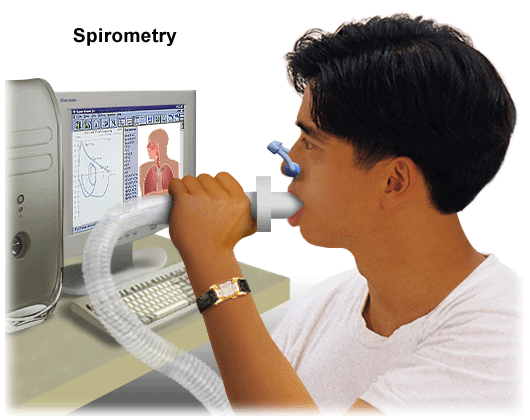If any of the following indicators are present and you are over age 40, your docotor may recommend testing for COPD. These indicators are not diagnostic themselves, but the presence of multple key indicators increases the probability of a diagnosis of COPD.
- Dyspnea (shortness of breath) that is:
- Progressive (worsens over time)
- Usually worse with exercise
- Persistent (present every day)
- Described by the patient as an "increased effort to breathe," "heaviness," "air hunger," or "gasping"
- Chronic cough:
- May be intermittent and may be unproductive
- Chronic sputum (mucus) production:
- Any pattern of chronic sputum production may indicate COPD
- History of exposure to risk factors (listed above)
 Tests used to diagnose COPD include simple, non-invasive, “breathe into a machine” tactics, performed by pulmononigist and are ordered by your primary care physician to determine cause of shortness of breath.
Tests used to diagnose COPD include simple, non-invasive, “breathe into a machine” tactics, performed by pulmononigist and are ordered by your primary care physician to determine cause of shortness of breath.
Spirometry, the evaluation of lung function with a spirometer, is one of the simplest, most common pulmonary function tests.
STAGES of COPD:
Stage I: Mild COPD - mild airflow limitation and sometimes, but not always, chronic cough and sputum production. At this stage, the individual may not be aware that his or her lung function is abnormal.
Stage II: Moderate COPD - worsening airflow limitation with shortness of breath, typicall developing on exertion. This is the stage at which patients typically seek medical attnetion because of chronic respiratory symptoms or an exacerbation of their
disease.
Stage III: Severe COPD - further worsening of airflow limitation, greater shorness of breath, reduced exercise capacity and repeated exacerbations which have an impact on the patient's quality of life.
Stage IV: Very Severe COPD - severe airflow limitation plus chronic respiratory failure.